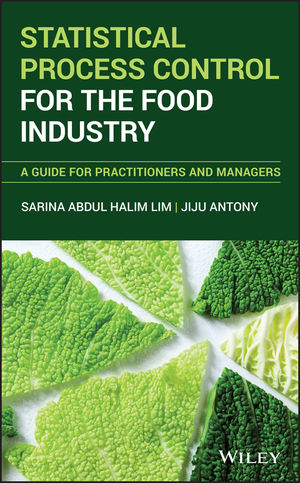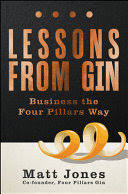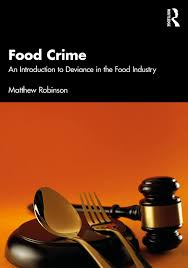All About Air Filtration Part 1: Choosing the Right Dust Collector

Photo by cottonbro studio
Food manufacturing can be a dusty business. Dust control is essential to protect workers, keep facilities safe and prevent cross-contamination or microbial growth in production lines. The first choice in designing an air filtration solution: What kind of dust collector do you need?
Types of Dust Collectors
A dust collector is a device used to capture and remove airborne dust particles. In the food industry, dust collectors are used across the entire supply and manufacturing chain, especially when handling dry bulk ingredients and food products. Common applications include grain handling and milling, baking and mixing, snack food production, confectionery and candy production, spice and flavoring manufacturing, powdered ingredient handling, and packaging lines.
Dust collectors come in various types, each designed to handle specific kinds of dust and meet the unique needs of different processes.
- Cyclone dust collectors: Cyclone dust collectors use centrifugal force to separate large, coarse particles from the airstream. In grain handling and milling operations, for instance, cyclones efficiently capture heavy dust loads before the air moves on to finer filtration systems. Cyclone collectors have low maintenance requirements and high durability. However, they are not effective in removing fine dust or achieving the level of air cleanliness required in most stages of food processing. For this reason, they are best used for pre-filtering in areas with very high loads of coarse dust. This extends the life and efficiency of subsequent dust collectors.
-
Baghouse dust collectors: Baghouses filter particulates out of the air using a series of filter bags made from fabric
materials. These bags are suspended inside a housing or baghouse. As the air passes through the fabric bags, dust particles are trapped on the outside surface of the bags while the cleaned air exits through the inside of the bags. Filter bags are available with high filtration efficiencies for use with finer dust types, such as flour, spice and sugar dust. Baghouse dust collectors are most efficient for applications involving dry particulate, high dust loads and very high airflow (measured in cubic feet per minute, or CFM). Compared to cartridge collectors with similar airflow ratings, baghouses take up more floor space, use more energy and are harder to maintain.Food Applications for Cartridge Collectors
Food Applications for Cartridge Collectors
Bin venting/grain handling
Seed processing
Bulk ingredient processing and handling (flours, sugars,
starches, spices, flavorings, etc.)
Milling, grinding and cutting
Batch mixing and blending of dry ingredients
Packaging line - Wet collectors: Wet collectors, or wet scrubbers, are less common in the food industry, but they are sometimes used for managing sticky or hygroscopic dust that can clog dry filters. They are also used in frying operations, such as those for snack foods, where oil mist and aerosols are generated. Wet collectors use water or other liquids to trap dust particles, which also reduces the risk of dust explosions when collecting highly combustible dust.
- Cartridge dust collectors: Cartridge dust collectors are particularly well-suited for the food industry due to their high efficiency, compact design and versatility. These collectors use pleated filters that provide a large surface area for dust collection in a very compact space. Cartridge air filters are available in a range of media types and efficiency ratings, making them suitable for a variety of food dust types, including fine powders.
Anatomy of a Dust Collector Cartridge Filter |
|---|
Anatomy of a Dust Collector Cartridge Filter The heart of a cartridge dust collector is the cartridge air filter itself. These filters consist of pleated filter media on a cylindrical frame, with end caps and/or gaskets on one or both ends. Filter cartridges vary in size, end cap configuration and gasket types. It is important to use cartridge filters made for the particular make and model of your dust collector. The heart of a cartridge dust collector is the cartridge air filter itself. These filters consist of pleated filter media on a cylindrical frame, with end caps and/or gaskets on one or both ends. Filter cartridges vary in size, end cap configuration and gasket types. It is important to use cartridge filters made for the particular make and model of your dust collector.Cartridge dust collectors come in a range of sizes and configurations. A small dust collector may be ducted to an individual process (e.g., a mixer or blender) or processing line. Alternatively, large dust collectors can be installed (often outside) to manage dust from multiple processes across an entire facility. Some cartridge dust collectors can be configured with specialized intake and exhaust plenums for ambient air filtration. These versatile dust collection systems help food processes and manufacturers ensure facility and worker safety, food quality, and regulatory compliance while maintaining high operational efficiency. |
About Cartridge Dust Collectors
The versatility and scalability of cartridge dust collectors make them the most widely used collector type in the food industry. The compact size of cartridge collectors makes them perfect for areas with limited space, such as small to medium-sized bakeries and mixing operations. Additionally, their ease of maintenance, with easy-to-replace cartridges and automated filter cleaning systems, ensures minimal downtime and consistent performance. Key advantages include:
- Versatility across different dust types and applications
- High efficiency in capturing fine particles
- Compact, space-saving design
- Ease of maintenance
 Here’s how they work.
Here’s how they work.
- Air Inlet: Dusty air enters the collector through an inlet designed to spread the air evenly across the filter cartridges. Baffle systems or dropout boxes can be used to protect the filters from coarse dust.
- Filtration: Inside the collector are cylindrical filter cartridges made of pleated material. This pleating increases the surface area, making filtration more efficient. As the air flows through the cartridges, dust particles stick to the outside of the filters. Clean air passes through and exits the collector. Filters build up a dust cake over time, which increases their ability to trap fine dust but also increases pressure drop and energy use. Filters must be changed when pressure drop becomes too high or filters show signs of wear, damage or leakage.
- Cleaning: Most cartridge collectors use a pulse-jet cleaning system. Short bursts of compressed air blow through the filters in the opposite direction, knocking excess dust off the filters. This extends filter life and reduces energy use.
- Collection: This dust falls into a funnel below the filters and then into a dust tray, bin or drum for collection and disposal. The collection bins must be emptied when they are full.
- Fire and explosion protection: Most dust types in the food industry are combustible under the right conditions, including flour, sugar, cocoa, spices and flavorings, powdered milk products, and starch powders. For this reason, cartridge dust collectors (along with baghouse and cyclone systems) should be equipped with an NFPA-compliant deflagration system to mitigate potential damage from a dust explosion inside the collector. Dust collectors should also have a fire suppression system and smoke detector.
For more information, download the Cartridge Filters Buyers’ Guide
Read more about air filtration in the rest of our series:
Looking for a reprint of this article?
From high-res PDFs to custom plaques, order your copy today!









